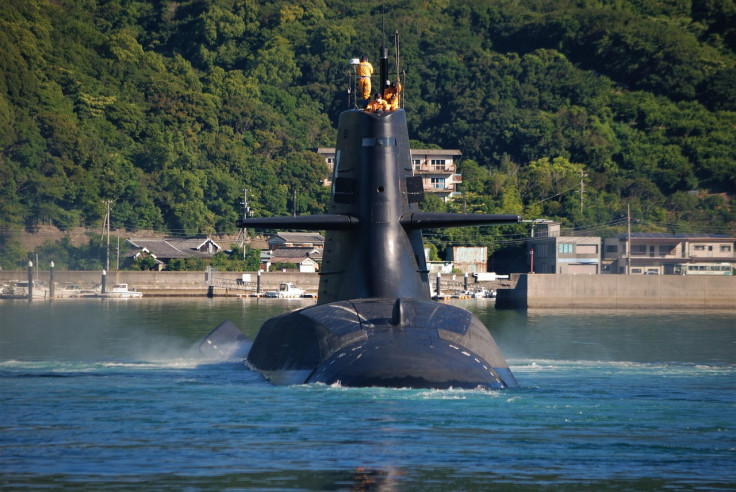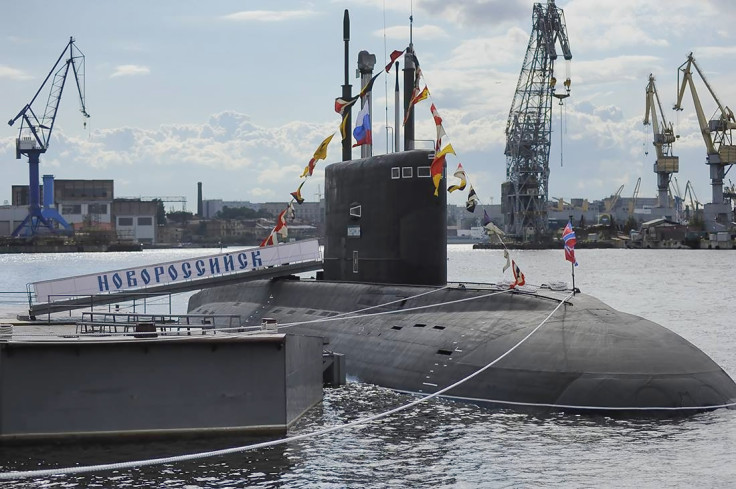
A Russian submarine unexpectedly surfacing off the coast of France has sparked a wave of speculation about whether the incident was standard naval protocol or a sign of deeper technical troubles within Moscow's fleet.
According to reports, the Novorossiysk, a Kilo-class diesel-electric submarine operated by the Russian Black Sea Fleet, was observed navigating on the surface near Brittany on 9 October 2025. According to NATO Maritime Command, the vessel was shadowed by French and British naval forces as it passed through the English Channel, which is one of the world's busiest and most closely watched maritime corridors.
What Happened Off France's Coast
The Novorossiysk, which had been returning from a Mediterranean deployment, was first photographed by NATO forces while operating on the surface near France's northwestern coast.
The Royal Navy's HMS Iron Duke and a helicopter tracked the submarine for three days from 7 to 9 October before handing over escort duties to the Dutch Navy, which confirmed it later guided the vessel through the North Sea.

On Saturday, Dutch authorities reported that the submarine was 'under tow,' prompting widespread speculation of a breakdown. However, Russia's Black Sea Fleet later denied that the vessel had suffered any malfunction.
Russia's Official Explanation
In a statement carried by TASS, the Russian Navy said that 'reports by some media outlets of an alleged malfunction that caused the Novorossiysk diesel-electric submarine to make an emergency surface off the coast of France are false.' Officials maintained that the submarine was conducting a 'scheduled inter-fleet transit' and was required to surface 'in accordance with international navigation regulations.'
According to defence experts, submarines are indeed obliged to travel on the surface while passing through narrow or congested waterways such as the English Channel, a standard safety measure under international maritime law.
Reports of a Fuel Leak
Contradicting Moscow's version, VChK-OGPU, a Telegram channel known for posting alleged leaks from Russian security services, claimed that the Novorossiysk had experienced a fuel leak in the Strait of Gibraltar while returning from its mission. The report said the leak caused fuel to enter the hold, creating a potential fire hazard and forcing the vessel to surface.

NATO has not verified those claims, but officials confirmed that allied ships had 'maintained constant maritime awareness' during the submarine's passage.
NATO and European Reaction
During a speech in Slovenia, NATO Secretary-General Mark Rutte referenced the episode, saying the incident highlighted Russia's dwindling naval strength. 'What a change from The Hunt for Red October — today it's more like the hunt for the nearest mechanic,' he joked, suggesting the submarine's surfacing may have been less than routine.
Rutte also noted that 'there is hardly any Russian naval presence left in the Mediterranean,' underscoring the broader decline of Moscow's seaborne operations amid the strain of the war in Ukraine and international sanctions.
The Novorossiysk and Its Significance
Commissioned in 2014, the Novorossiysk is one of Russia's Improved Kilo-class submarines, designed for stealth operations in coastal waters and armed with Kalibr cruise missiles. It is part of a fleet often deployed for intelligence-gathering and patrol missions between the Black Sea and Mediterranean.
While Moscow insists that the surfacing was procedural, the incident, combined with reports of technical issues, has added to growing doubts about the condition of Russia's non-nuclear fleet. Analysts suggest the episode illustrates how maintenance difficulties and resource shortages are beginning to show even in Moscow's more modern naval assets.
For now, the submarine's emergence in one of Europe's busiest sea lanes serves as both a reminder of Moscow's continuing military reach and a symbol of its increasing vulnerability at sea.







